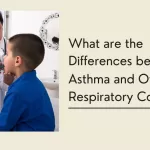Everything you need to know about Vitiligo!
Are those white spots and patches on your skin making you feel a little self-conscious? Don’t worry, you’re not alone. Vitiligo is a condition that results in white patches to appear on the skin. While it may not be life-threatening, it can enormously impact a person’s physical appearance and emotional well-being. This disorder can be particularly distressing for those who develop vitiligo in visible body areas, such as the face or hands. In addition to cosmetic concerns, vitiligo can be associated with other autoimmune conditions, such as thyroid disorders or diabetes. Therefore, knowing the risk factors and treatment options is vital to seeking appropriate medical care.
What is Vitiligo?
Vitiligo is an autoimmune disease in which specific areas of the skin lose colour, causing spots and patches. This happens when the immune system misidentifies and destroys melanocytes (pigment-producing cells). Vitiligo can affect any part of the body, although it typically appears on sun-exposed areas, including the face, neck, and hands, as well as in skin folds. A lack of melanin in your skin may cause your hair to become white or grey. The condition varies from person to person, and it is difficult to predict how much skin will be damaged. Some people have a few tiny white spots on skin, while others have bigger vitiligo patches covering substantial skin areas.
How to Identify it?
Vitiligo disease symptoms can range from moderate to severe and affect many skin areas. The first indication of vitiligo is a loss of natural colour or pigment, known as depigmentation. Depigmented patches can occur anywhere on the body, even in sun-exposed areas like the hands, lips, arms, and cheeks.
Other warning signs are:
- Loss of colour within your lips and nose
- Colour changes in the inner layer of the eyeball
- Hyperpigmentation along the edges of the discoloured patches
- Premature greying of hair and white patches on the armpits, genitals, and navel
- White, patchy spots
- Itchy skin
Please consult our skin specialist, Dr Mahima, for the best vitiligo treatment if you notice any symptoms.
What are the Types?
There are two types of vitiligo:
Generalised or Non-segmental: It is the most common form of this ailment. Depigmented patches develop symmetrically on both sides of the body. They can, for example, look like identical dots on both legs or arms. Non-segmental vitiligo causes quick colour loss that spreads across vast body areas. This kind of vitiligo occasionally advances, pauses, and then resumes, alternating between an on-again, off-again cycle.
Segmental: Segmental vitiligo is rare and often appears at a young age. It causes skin colour loss in patches on a single part of the body, and some patients with this illness lose part of their hair colour. It lasts for approximately a year or two before stopping.
Subtypes: Vitiligo is classified into types based on where the discolouration develops, but additional subtypes describe how much of your skin is affected.
- Focal: This is a rare kind in which, within a year or two, the macules form in a small region and do not spread in a specific pattern.
- Universal: This kind has at least 80% of the body’s skin without pigmentation.
- Mucosal: This kind affects mucous membranes, usually in the mouth or genitals.
- Trichrome: This kind comprises white marks on skin with three colours: a centre region of white depigmentation, the usual skin tone, and a lighter skin area between the two.
What are the Risk Factors?
There is no way of knowing whether a person will acquire vitiligo. However, specialists have discovered certain risk factors that increase the likelihood of harm.
Autoimmune condition: An autoimmune illness occurs when your body’s immune system misidentifies healthy melanocytes, the cells that cause skin pigmentation, as risks comparable to destructive intruders such as bacteria. As a result, the immune system becomes too active, producing antibodies that target and damage melanocytes.
Family history: Is vitiligo inherited? This is a common question. Approximately 20% of those diagnosed with this ailment have a family history of skin problems, and studies have shown that a genetic background predisposes people to develop it. It has been found that roughly 30 genes may increase the likelihood of acquiring this skin disorder.
Skin damage or trauma: Research suggests that vitiligo is more prone to develop in places with regular sun exposure and severe sunburns, particularly on the face, neck, and hands. Trauma-affected areas of the skin, such as a deep cut or frequent rubbing, scratching, or pressure, are also more prone to developing vitiligo.
Stress: Research has indicated that stressful situations or continuous mental and physical stress can induce the development and progression of vitiligo, especially in those who are genetically susceptible. The skin changes are considered to be caused, at least in part, by the hormonal changes that occur when a person is under acute stress.
Chemical exposure: When the skin comes into contact with certain chemicals, it can lead to an immune response that targets the melanocytes responsible for producing the pigment melanin. This immune response can destroy melanocytes, leading to the development of vitiligo patches.
Is it Contagious?
Can vitiligo spread? Many people ask this question when they first learn about this skin condition. The answer is NO. Vitiligo isn’t contagious. It is not caused by an illness or bacteria that may be transmitted to others by direct contact, such as touch, saliva, or other forms. Internal bodily causes cause it and have nothing to do with external or infectious agents.
Homeopathic Treatment:
The efficacy of vitiligo homeopathic treatment has captured the public’s interest and prompted discussion among medical authorities. Homeopathy harnesses the body’s unique healing capacities to provide a holistic and natural approach to skin discolouration.
One of the primary benefits of homeopathic treatment for white patches on skin is the total absence of side effects. This approach is safe and gentle, producing long-lasting and fast impact. Homeopathic vitiligo medication promotes repigmentation and minimises the occurrence of white patches by carefully selecting remedies based on individual symptoms and constitutional factors.
Homeopathic treatment for white spots on skin is diluted to a safe and toxic-free level, making it appropriate for people of any age.
Bharat Homeopathy
If you’re seeking the finest therapy for white patches on your skin, Bharat Homeopathy could be the place to go. Bharat Homeopathy is the ideal choice for you because of its good reputation and well-qualified experts. Our hospital takes a comprehensive approach to recovery, addressing the underlying causes of vitiligo rather than merely its symptoms.
Our expert professionals thoroughly evaluate your case, prepare a treatment plan suited to your individual needs, and provide the most effective homeopathic medicine for vitiligo. With a thorough grasp of homoeopathic principles, we attempt to provide a safe and effective treatment supporting natural healing.
Choose Bharat Homeopathy for your white patches on skin treatment today and see the difference!


